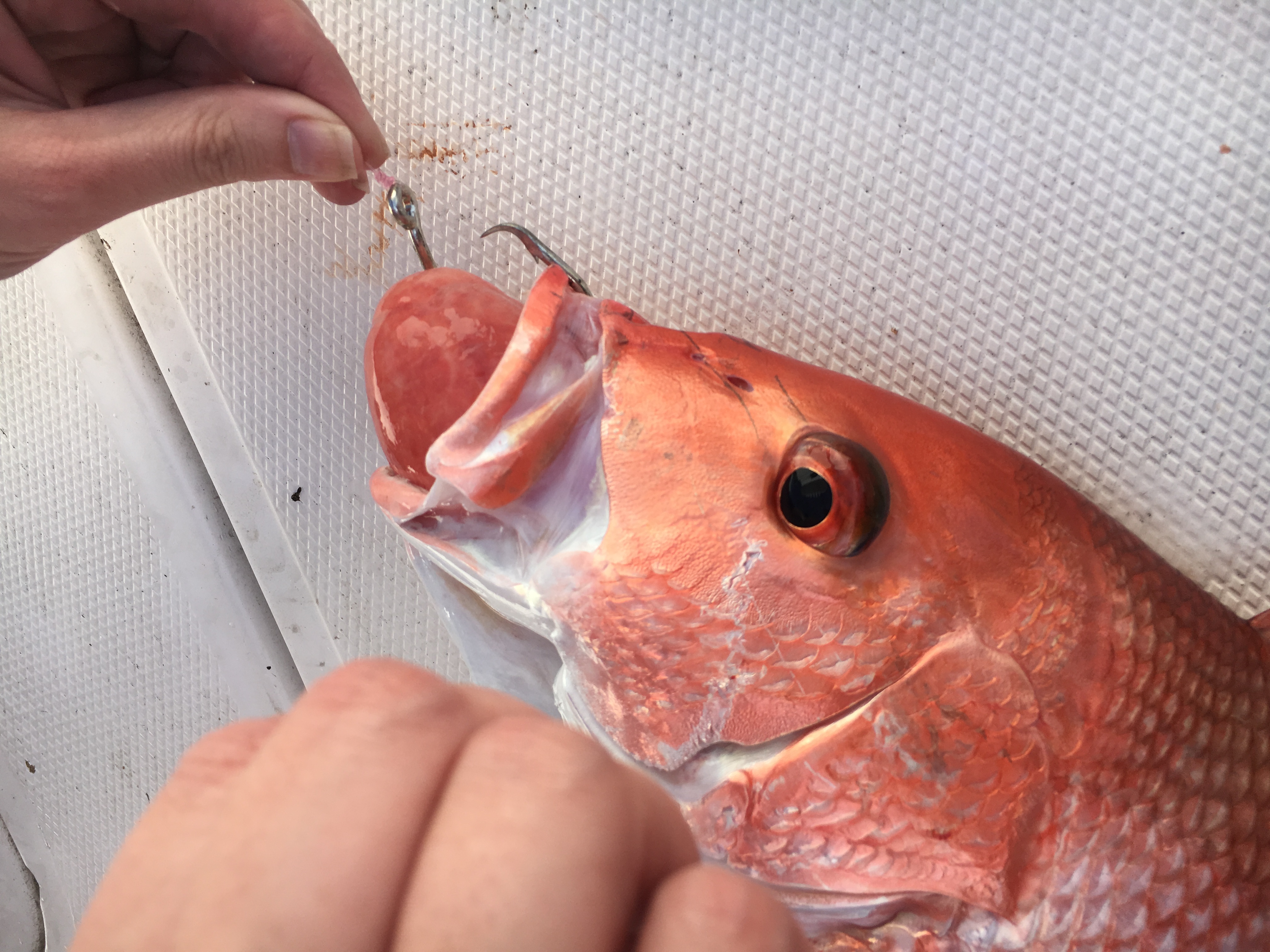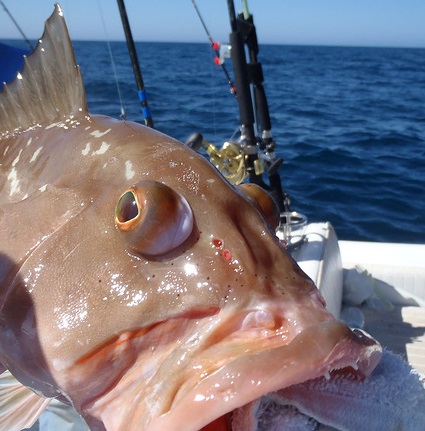Spotlight on Barotrauma
Barotrauma is bodily injury to a fish caused by sudden changes in pressure. As an angler quickly brings a fish up from deep water, the pressure of the fish’s environment decreases, causing its swim bladder to expand. The pressure in the water increases 1 atmosphere approximately every 33 feet. Generally, fish caught deeper than 33 feet can experience barotrauma, but some species, such as bull red drum, may show signs at shallower depths. Barotrauma is most common in depths greater than 90 feet.
Fish experiencing barotrauma have difficulty swimming back to their original depth, often floating on the surface for an extended time. These fish become easy prey for sharks, dolphins, and birds. If the fish is able to return to depth, it may have health issues from prolonged impacts of barotrauma.
Signs of Barotrauma
Several factors such as species, depth, and time of fight can affect the severity of these signs.
- Stomach protruding from the mouth
- Bulging eyes
- Bloated midsection or distended intestines
- Sluggish swimming or inability to swim downward
- Lifted or bubbly scales.
What Anglers Can Do to Reverse Barotrauma
Anglers can use descending devices or venting tools on fish showing signs of barotrauma. Anglers should assess each fish individually to determine if they need descending assistance and choose a method that they are comfortable using.
Descending Devices
Descending devices offer non-invasive options for anglers to depressurize fish by sending them back down to depth and allowing their swim bladders to return to size naturally. As the fish descend, their swim bladders naturally decrease with the increase in pressure. There are many types of descending devices that anglers can make at home or purchase.
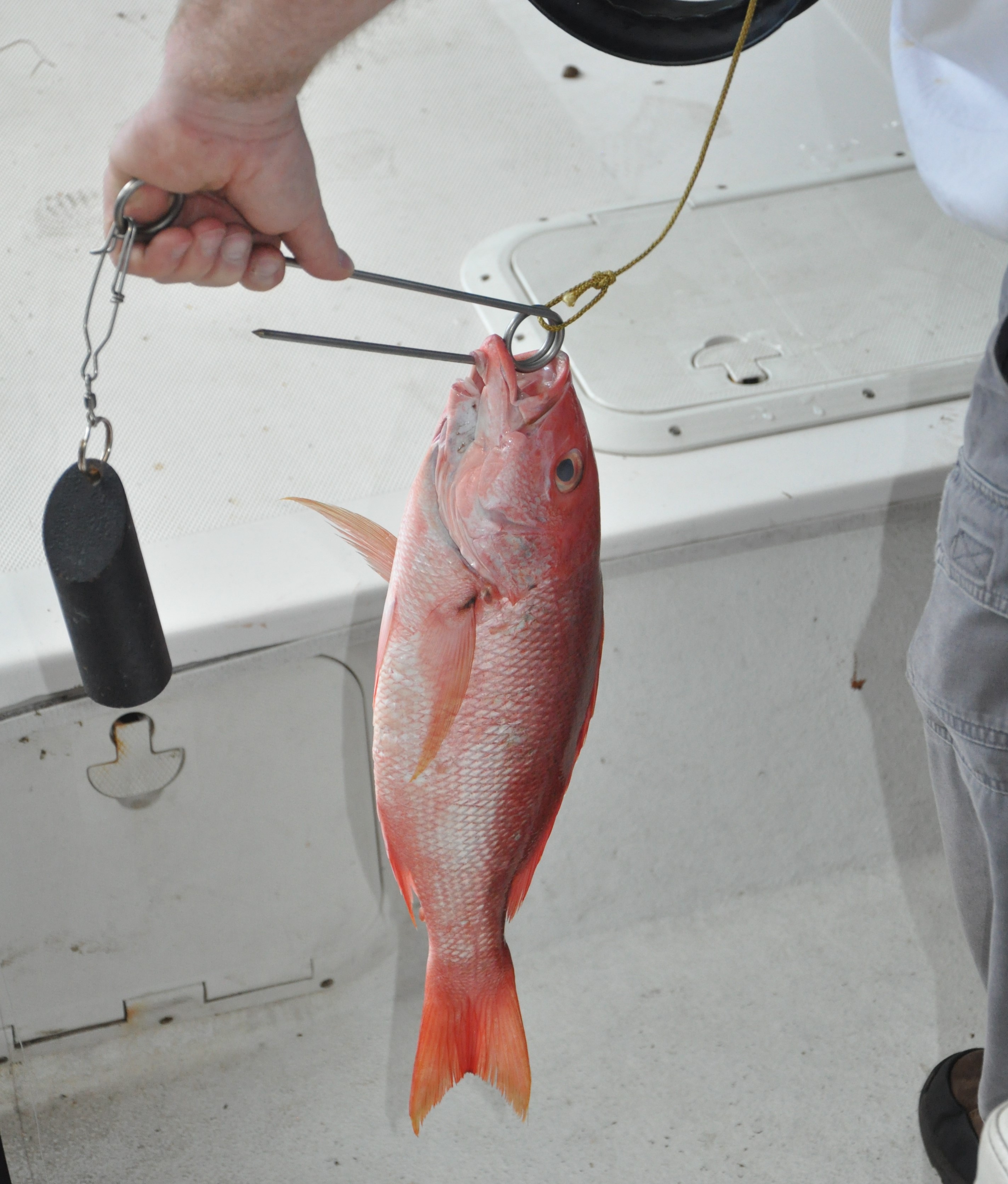
Weighted Hook or Clamp
These devices use an inverted barbless hook or a clamp to hold the fish. They are tied to a rod and reel with heavy enough weight attached to get the fish back down to the depth where it was caught. Once at depth, a quick tug on the rod will release the fish.
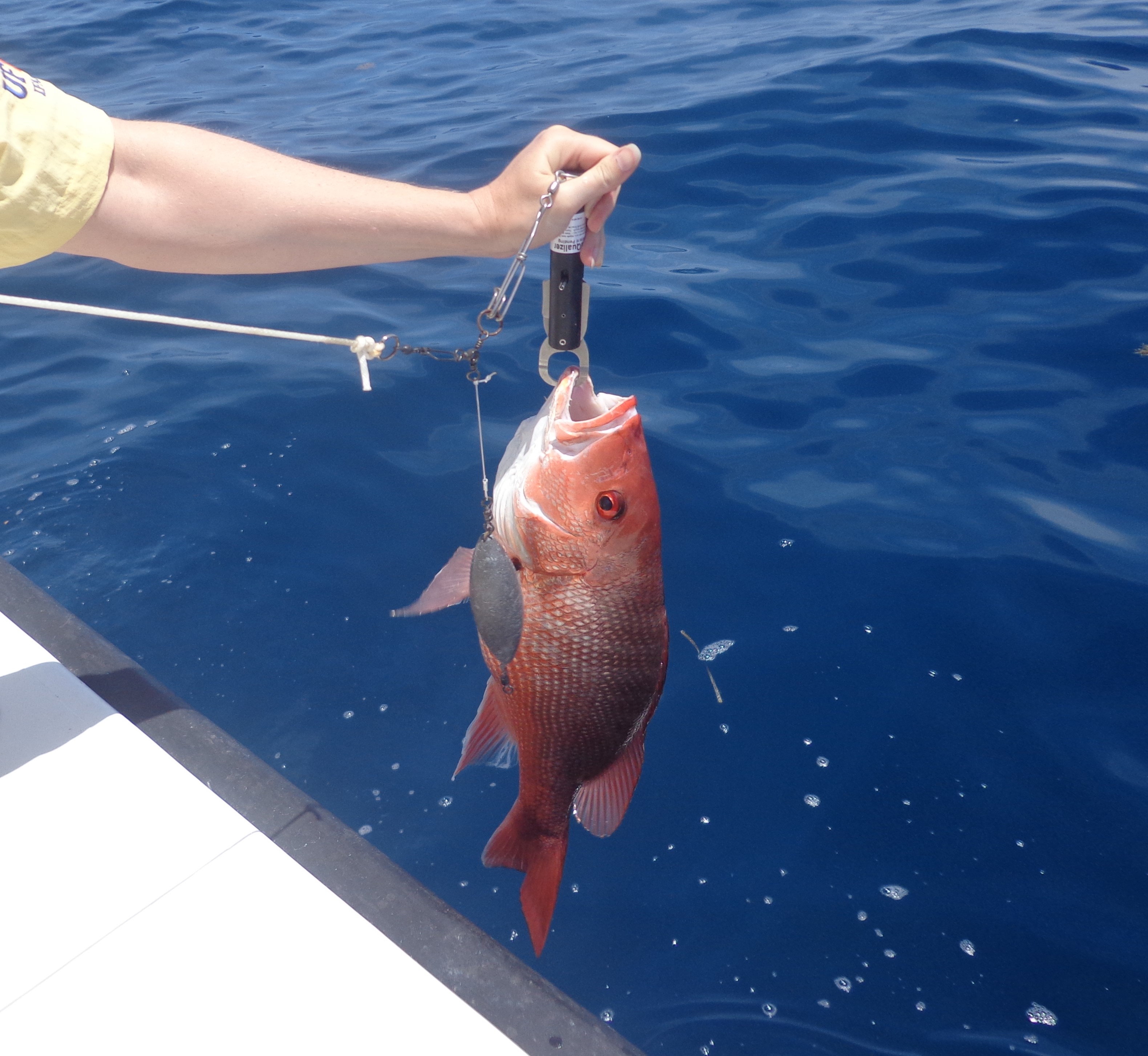
Pressurized Release
Similar in design to the weighted hook or clamp, these devices use pre-set, pressure-activated clamps to return the fish to depth. The clamps are attached to a rod and reel along with the weight necessary to reach the depth where the fish was caught. Once the fish is lowered and reaches the pre-set pressure, the clamp automatically opens and releases the fish.

Inverted Crate or Net
Created by adding weights to a milk crate or a drop crab net, these devices provide more protection from predators as the fish descend. Fish are placed underneath the crate or net and lowered with a rope to depth. Due to the need for rope, this method is not always ideal for returning a fish to the depth where it was caught, but studies have shown that getting a fish down to at least 90 feet starts the depressurization process and increases the fish’s survivability. Once at depth, the fish swims out from under the crate or net, which can then be pulled back to the surface.
Descending devices require less training and have the potential to cause less harm to the fish than using venting tools. They also require more equipment, including a designated rod and reel on the boat to decrease the time between catch and release.
Learn how to properly use descending devices
Venting Tools
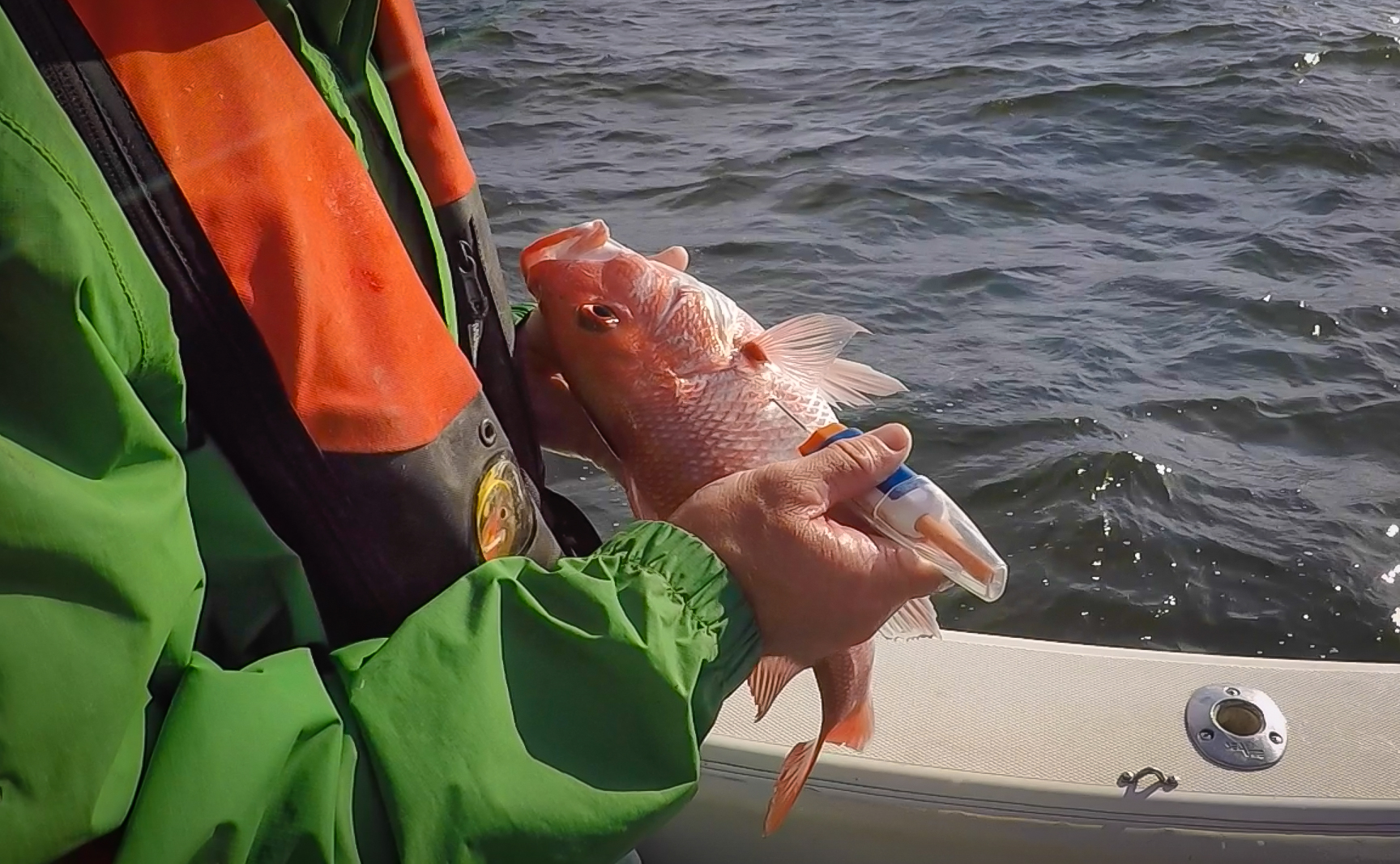
Venting tools are used to quickly remove the gas buildup in the swim bladder and allow a fish to return to depth unaided. To vent a fish, insert a hollow needle at a 45-degree angle behind a pectoral fin (the fins on either side of the fish, just behind the head). Insert the tool just deep enough to puncture the swim bladder and release the gas.
- Using tools like knives or solid needles to attempt to vent a fish may have the reverse effect and can decrease the fish’s chance of surviving after it’s released.
- Never vent the organ sticking out of the fish’s mouth. This is the fish’s stomach, not the swim bladder, and puncturing it will increase the chance of the fish dying after it’s released.
Venting can be quick and easy and requires the least amount of time and equipment from the angler when performed correctly. Inexperienced anglers run the risk of puncturing themselves. If done improperly, venting can increase the chance the fish will die after it’s released.
Learn how to properly use a venting tool
More Resources
The DESCEND Act of 2020 requires commercial and recreational vessels (including for-hire) to have a venting tool or descending device rigged and ready to use when fishing for reef fish in Gulf of America federal waters. These new requirements go into effect January 13, 2022.
